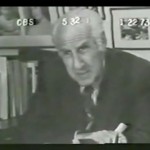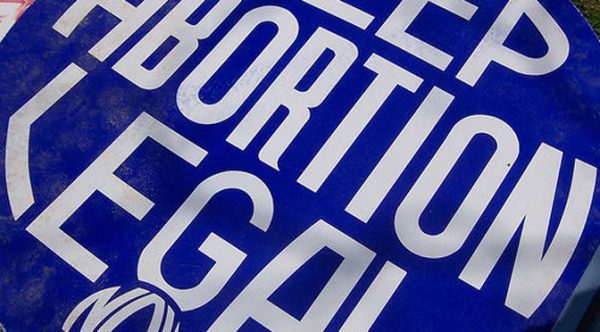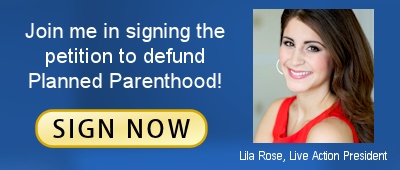The Humanist Manifesto was a document written in rejection of orthodox teaching on religion and the existence of God and was signed by several prominent leaders in the abortion movement. In 1933, 34 humanists, including John Dewey, gathered together to write the radical Humanist Manifesto 1, which came at a time when eugenic philosophy was dominating culture. It rode in on the heels of Hitler’s reign of terror in Nazi Germany and preceded, by just a few short years, the very first committee on euthanasia (National Society for the Legalization of Euthanasia), put together by several members of Margaret Sanger’s American Birth Control League as well as members of the American Eugenics Society.
Interestingly enough, in 1957, Sanger received the “Humanist of the Year” award.
In 1973, 40 years after the first Manifesto was penned, Humanist Manifesto 11 was drafted.
This Manifesto came at a time when overpopulation, birth control, and abortion were prominent concerns, and it is reflected in the text of the document:
We reject all religious, ideological, or moral codes that denigrate the individual, suppress freedom, dull intellect, dehumanize personality. We believe in maximum individual autonomy… the possibilities of individual freedom of choice exist in human life and should be increased….
The right to birth control, abortion and divorce should be recognized… a civilized society should be a tolerant one.
The insertion of abortion into Humanist Manifesto 11 attracted leaders in the movement who signed onto the Humanist ideology.
Signers included:
- Alan F. Guttmacher, president of Planned Parenthood Federation of America.
- Norman Fleishman, executive vice president of Planned Parenthood World Population, Los Angeles
- Lawrence Lader, chairman of the National Association for Repeal of Abortion Laws (which later became NARAL)
- Henry Morgentaler, M.D., Canadian abortionist and past president of Humanist Association of Canada
- Betty Friedan, founder of N.O.W., who was later granted the “Humanist of the Year” award in 1975
Manifestos 1 and 11 rejected God and attempted to outline how humans could work to save themselves from the ills of society.

Book Cover: Humanist Manifesto 1 and 11 edited by Paul Kurtz
Paul Kurtz, who published the Manifestos in 1973, wrote about this in his preface:
As in 1933, humanists still believe that traditional theism, especially faith in the prayer-hearing God, assumed to love and care for persons…is an unproved and outmoded faith…. Reasonable minds look to other means for survival.
Manifesto 11 reinforced the belief that God and religion were to be ignored while human reasoning was to be exalted:
We believe… that traditional dogmatic or authoritative religions that place revelation, God, ritual, or creed above human needs and experience do a disservice to the human species…. As nontheists, we begin with humans not God….”
Tragically, this concept of rejecting a Creator laid the foundation for what has become a horrific holocaust in American society — and it was enhanced by the idea that the earth was overpopulated by humans:
The future is, however, filled with dangers. In learning to apply the scientific method to nature and human life, we have opened the door to ecological damage, overpopulation….
Manifesto 11 goes on to state that “excessive population growth must be checked”:
The world community must engage in cooperative planning concerning the use of rapidly depleting resources. The planet earth must be considered a single ecosystem. Ecological damage, resource depletion, and excessive population growth must be checked by international concord. The cultivation and conservation of nature is a moral value; we should perceive ourselves as integral to the sources of our being in nature. We must free our world from needless pollution and waste, responsibly guarding and creating wealth, both natural and human. Exploitation of natural resources, uncurbed by social conscience, must end.
The concept of overpopulation then easily paved the way for the unfettered legalization of abortion.
Human Manifesto 11 arrived in the 1970s, when rumors of food shortages promoted by academic professors such as Paul Ehrlich, author of the now discredited book “The Population Bomb,” helped fuel the debate that the earth had too many people.
In 1968, Ehrlich told a Planned Parenthood audience that 3.5 million people, “mostly children” would die that year.
The Stanford professor of doom also predicted: “In the 1970s the world will undergo famines – hundreds of millions of people are going to starve to death.” Ehrlich also falsely predicted that by the 1980s, most of the world’s key natural resources would be depleted, that 65 million Americans would die of starvation between 1980-89, and that by 1999 “the population of the U.S. [would] shrink from 250 million to about 22.5 million … because of famine and global warming.”

Dr. Alan Guttmacher
Planned Parenthood, already deep into the philosophy of eugenics, appeared to heed Ehrlich’s foolish ideas.
In 1966, former Planned Parenthood president Alan Guttmacher compared the world population with the threat of nuclear war, telling the Washington Post that governments may have to act officially to limit family size. “It may be taken out of the voluntary category,” Guttmacher said.
In 1969, author Paul Scott wrote about Guttmacher’s philosophy. “In an article in Medical World News Reports recently, Dr. Guttmacher forsees the possibility that coercion may become necessary to reduce the birth rate,” Scott wrote, quoting Guttmacher, who said, “Each country will have to decide its own form of coercion and determine when and how it should be employed.”
Then, by 1970, former Planned Parenthood president Alan Guttmacher sounded population control alarm bells again while speaking under the sponsorship of Planned Parenthood of Sarasota County, Inc., telling a Sarasota paper that the idea of limiting families to only two children was “desirable.”
However, Sarasota Herald Tribune journalist Lee McCall reported that while “there has been discussion of limiting families to 2.2 children, Dr. Guttmacher feels it inadvisable for Planned Parenthood to boldly vocalize such a plan. Guttmacher, who knew just how unpopular the idea of forced population control could be, told McCall that the limitation of births “would be difficult.”
Guttmacher added that it was a bad idea for other reasons as well:
In the first place it would probably split the organization. Also we would have trouble with minority groups accepting this. So even though the plan may be desirable and would make us a stronger nation, a less polluted nation, I feel it would be strategically unwise at this time.”
Guttmacher then went on to endorse a plan that he felt would work: abortion. “If we could get the abortion law liberalized, most of the 750,000 unwanted pregnancies would not lead to babies…” he stated.
Years before Humanist Manifesto 11 was drafted, signers Guttmacher, Lader and Friedan were working towards the liberalization of abortion laws. While Guttmacher worked within the structure of Planned Parenthood, Lader strategically recruited feminist leader Betty Friedan to do his bidding to legalize abortion. In her book, “Subverted,” author Sue Ellen Browder explains in depth how Lader convinced Friedan to insert abortion and contraception into the women’s movement “Bill of Rights.”
“They convinced her she wouldn’t be able to achieve equity—not equality, equity—for women in education and the workplace if she didn’t include abortion in her package of political demands,” Browder said in a recent interview about her research.
The Supreme Court eventually played the most pivotal role in abortion legalization when a majority of male Justices ruled in favor of the infamous Roe v. Wade decision, legalizing the slaughter of innocent preborn children in the womb. Tragically, the pro-abortion ideas outlined in Humanist Manifesto 11 and promoted by many of its signers are still held by some Americans today.
But that tide is turning as the American public awakens to the truth about the plight of the preborn child.








